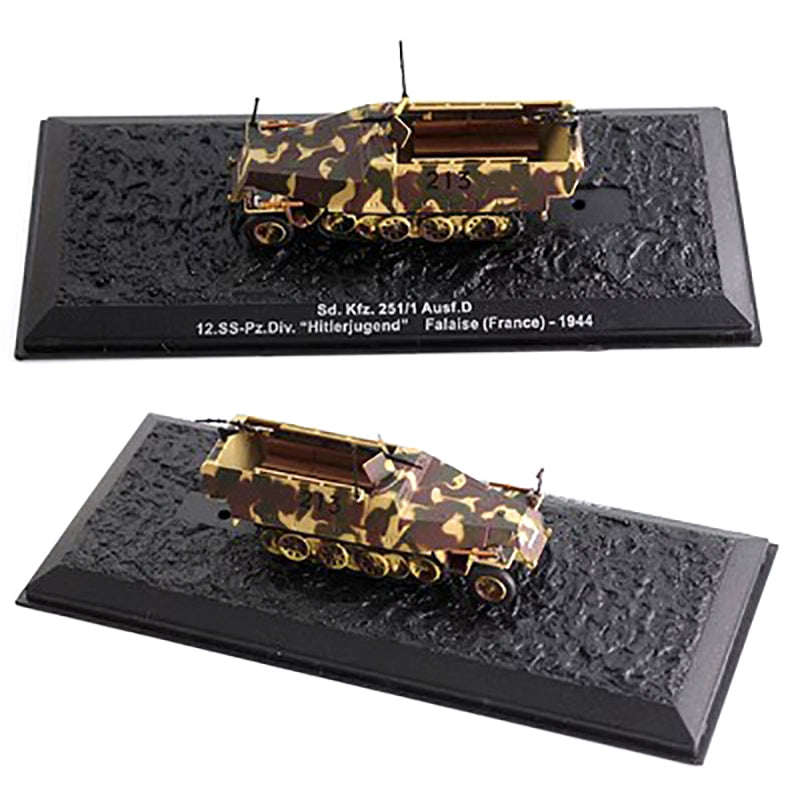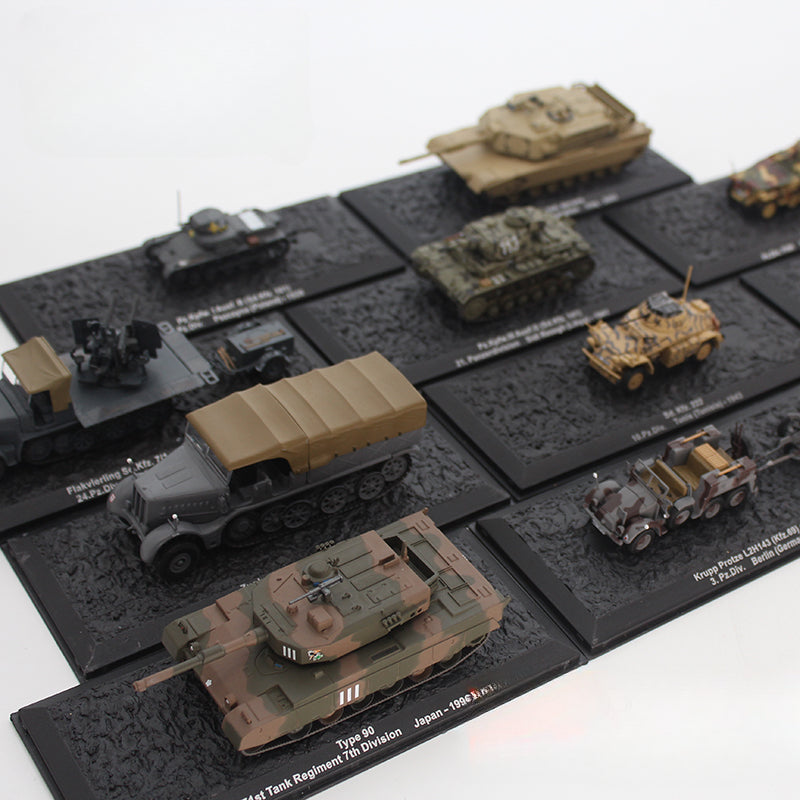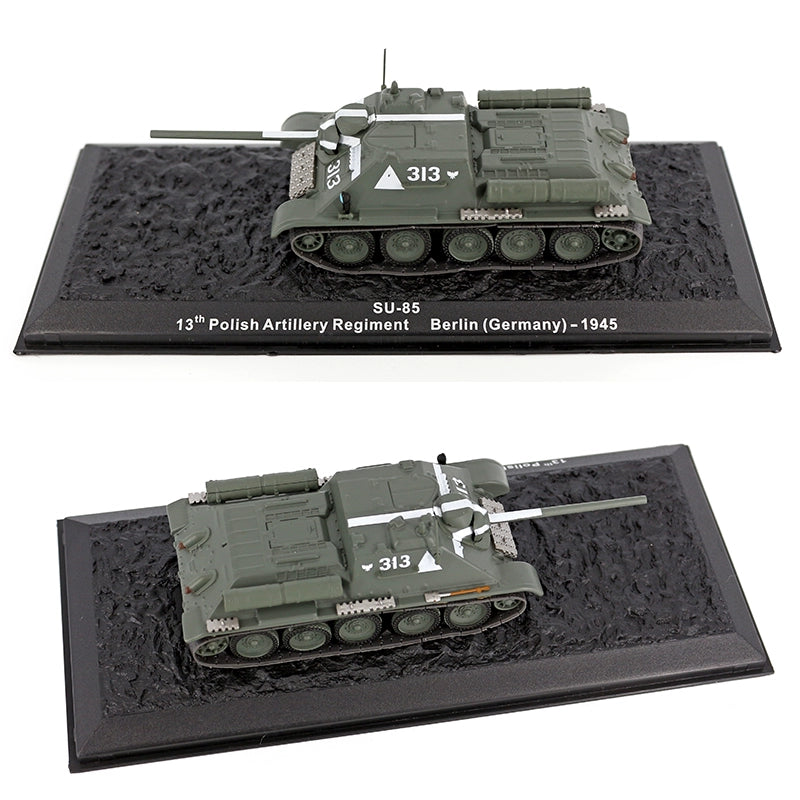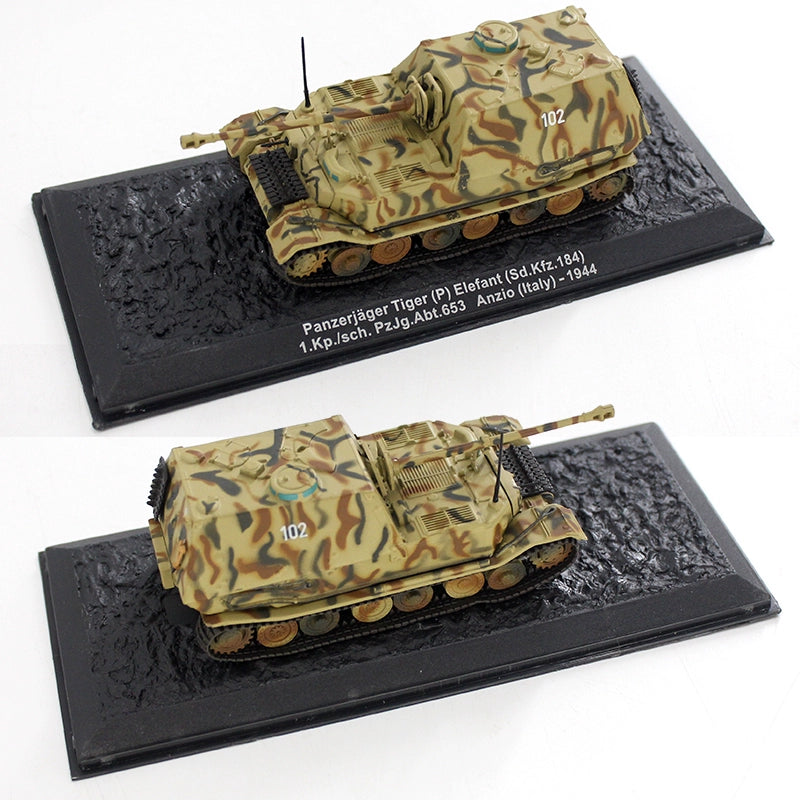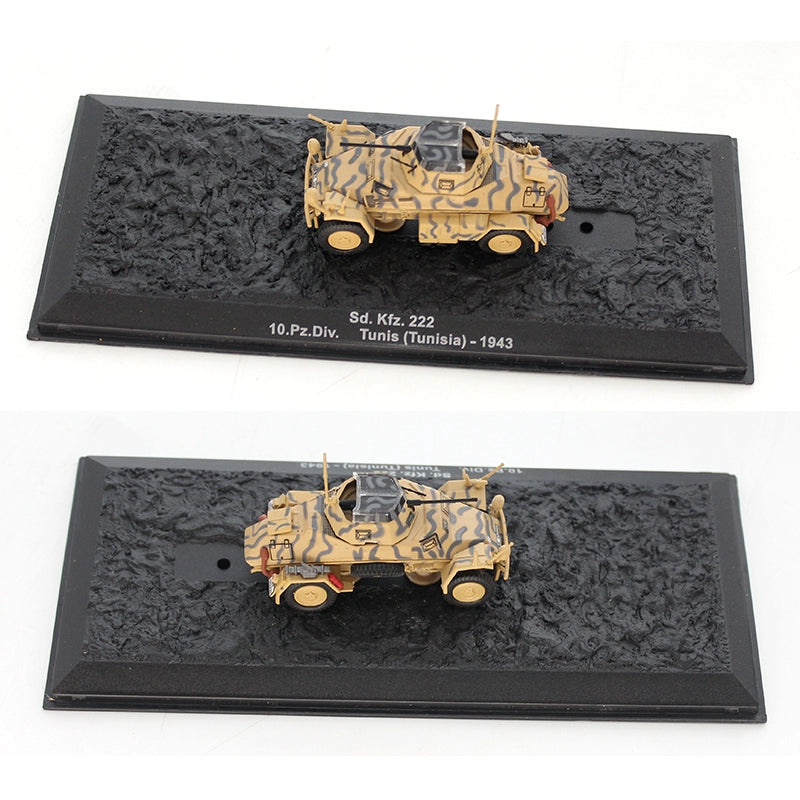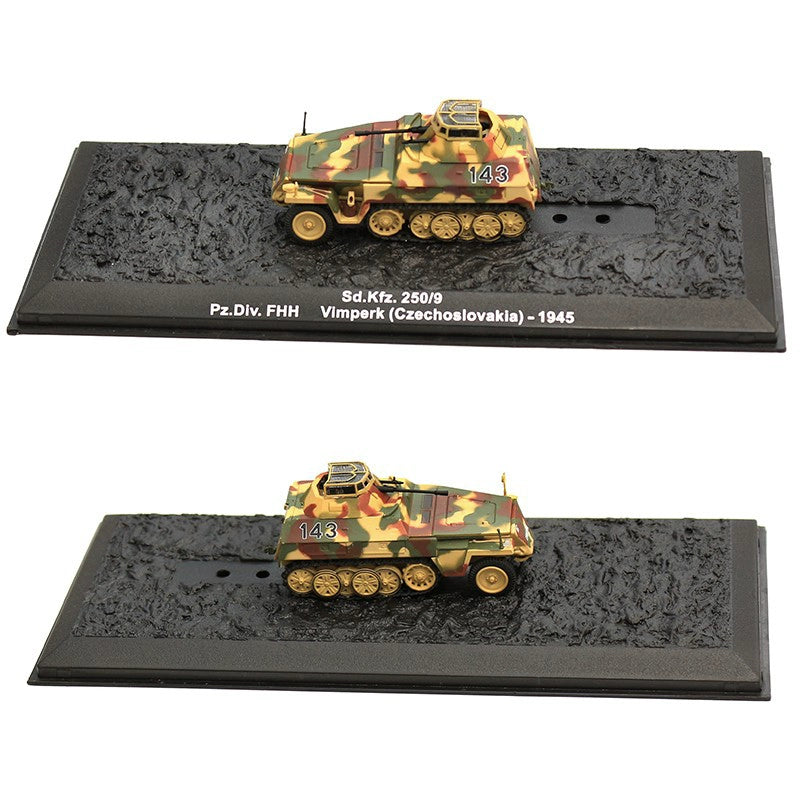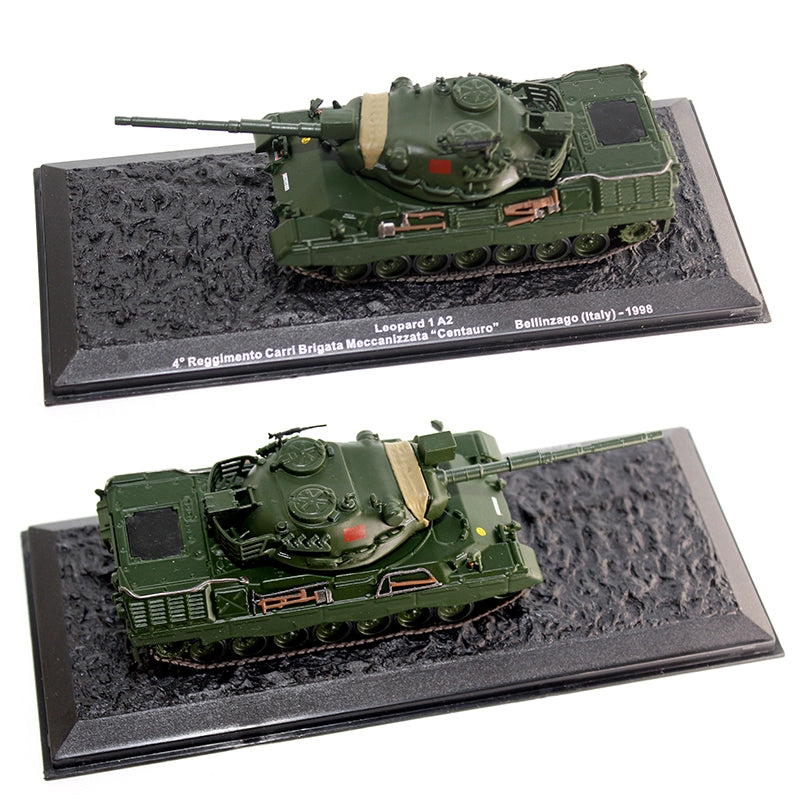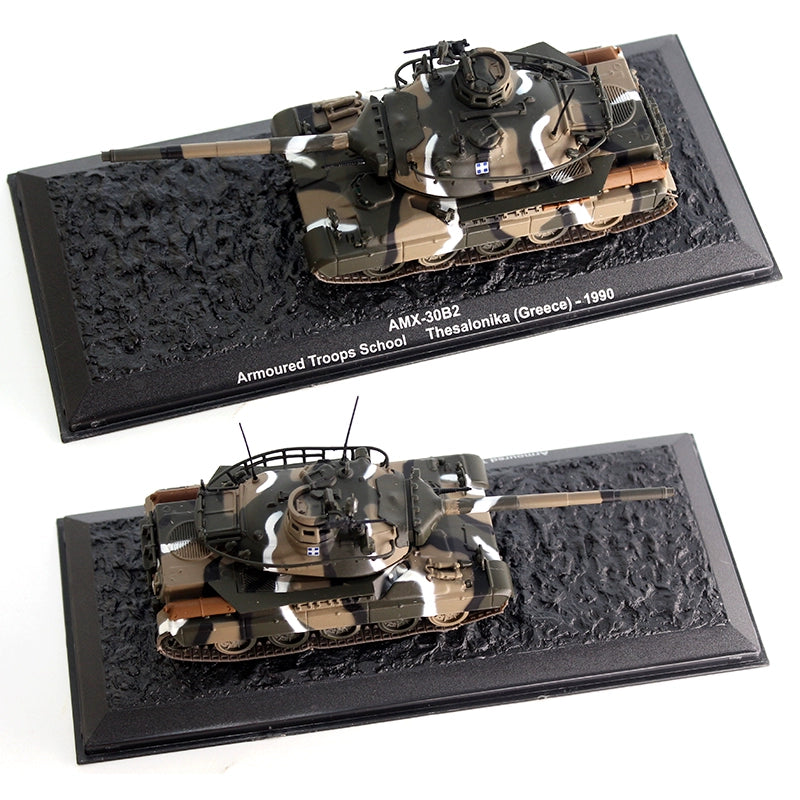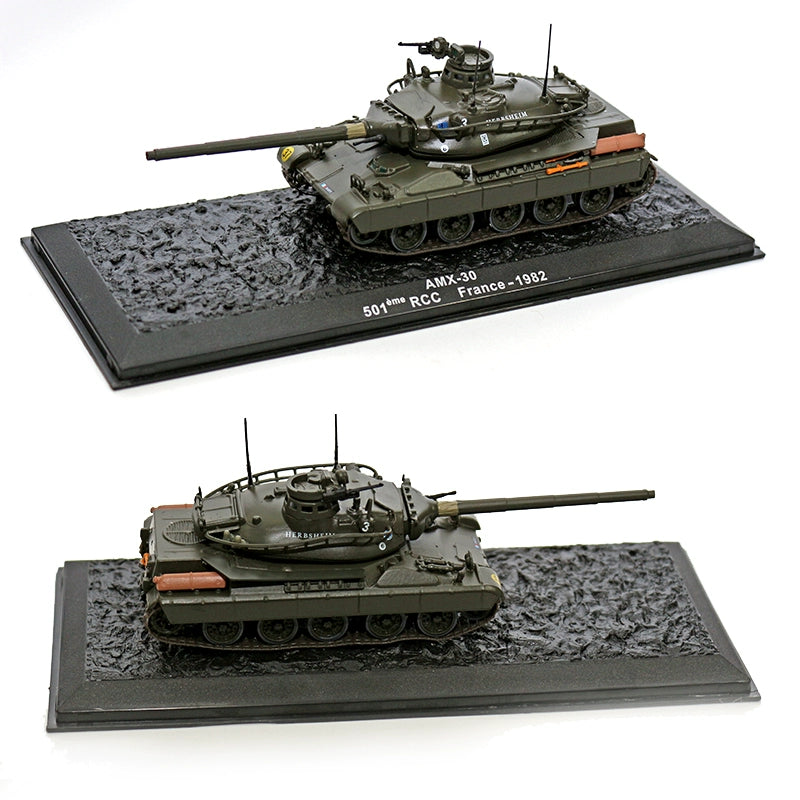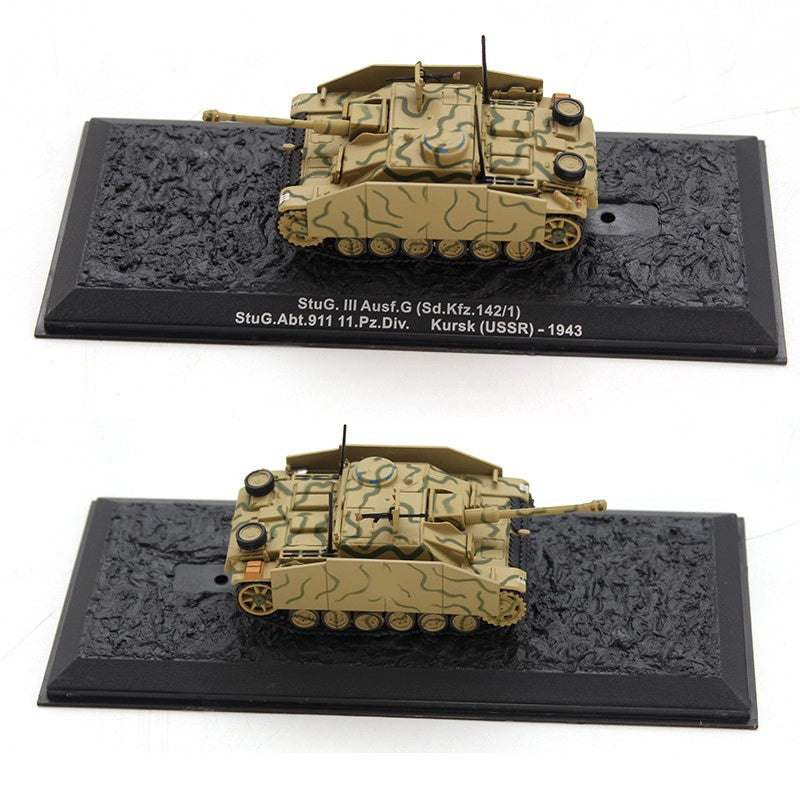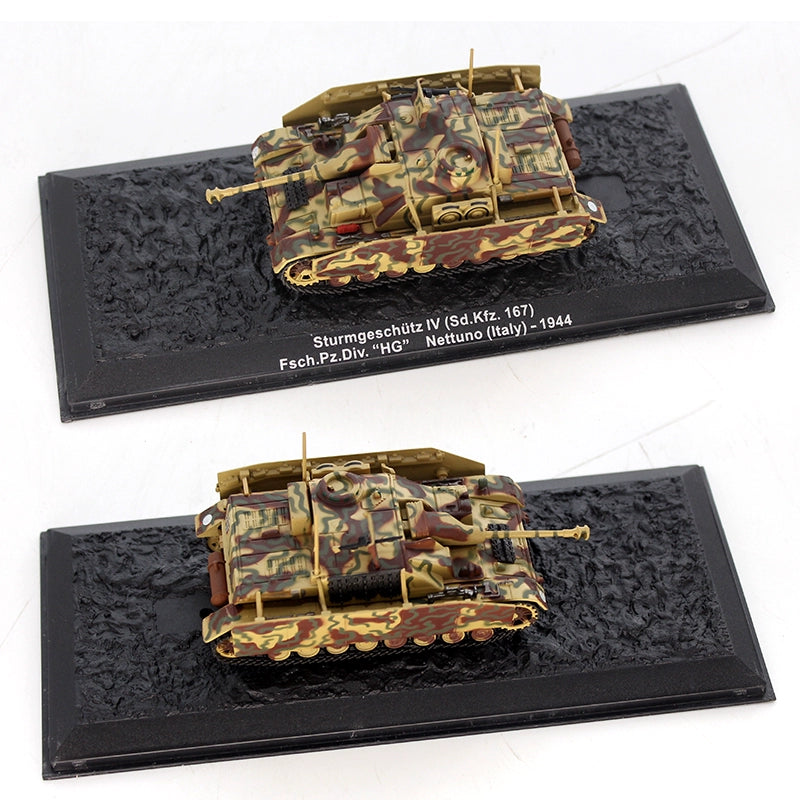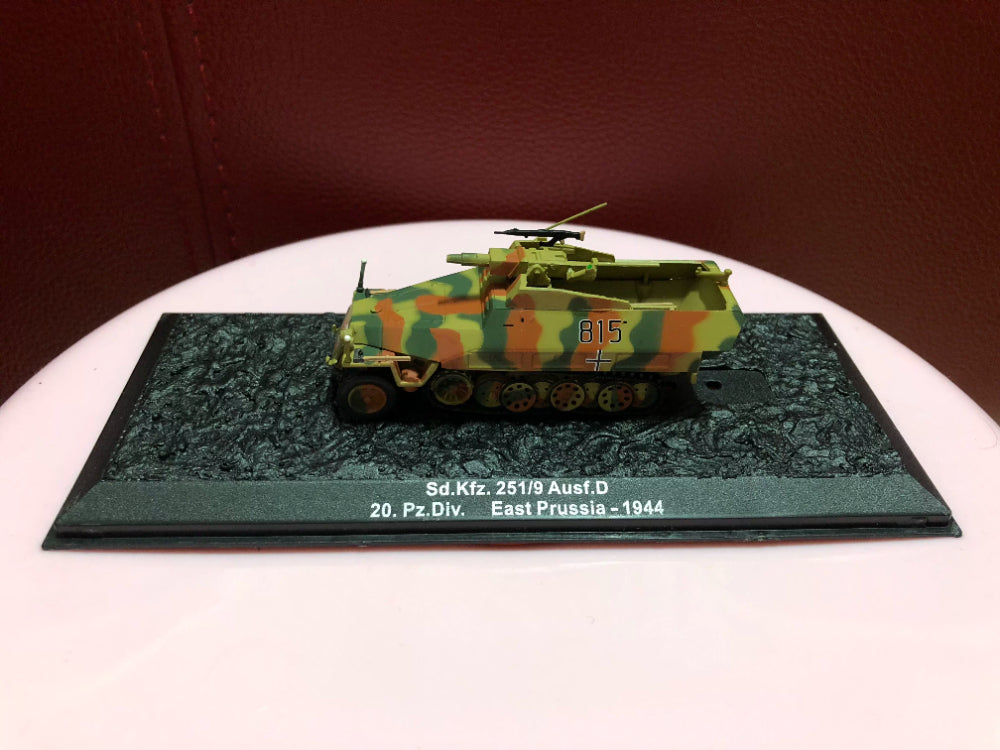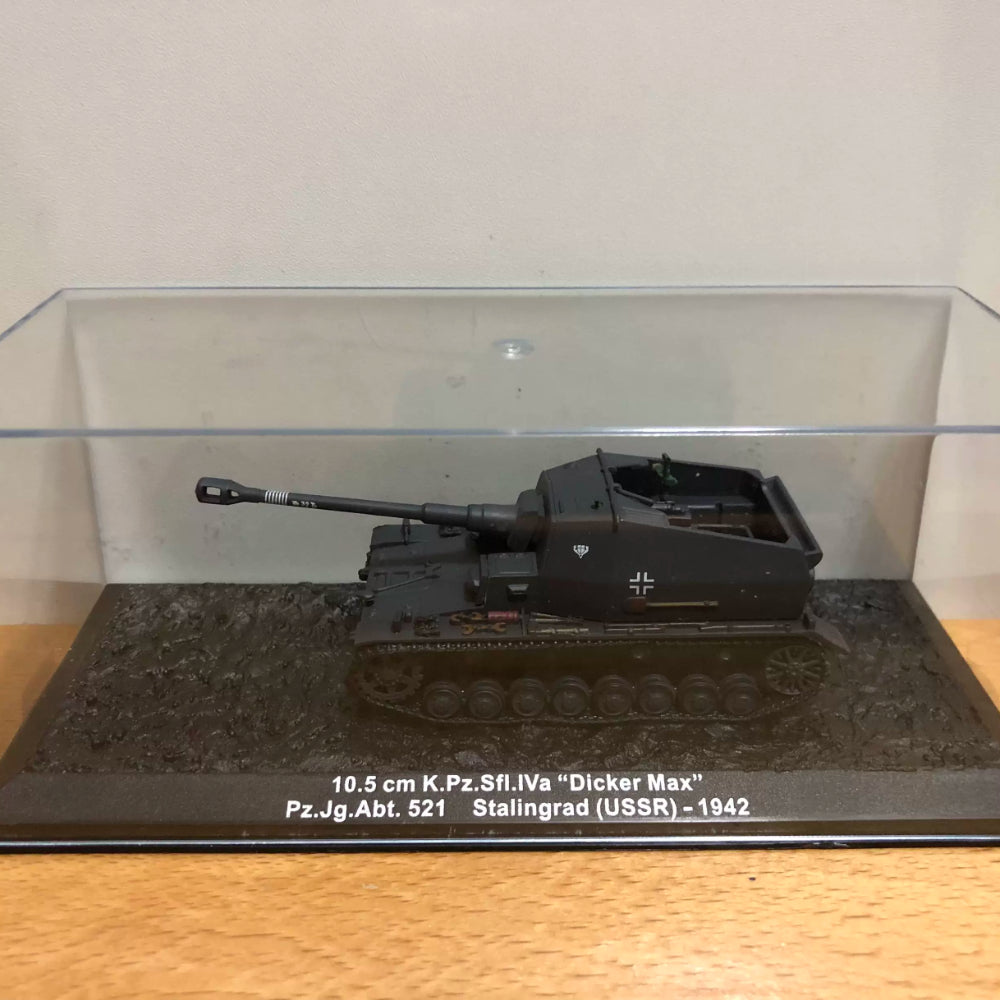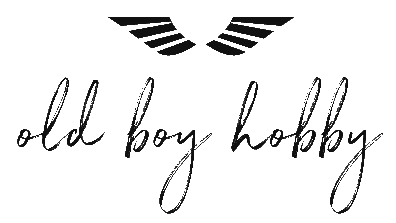old boy hobby
1/72 Scale WWII German Military Vehicles Diecast Model Sd.Kfz. 251 SU-85 Dicker Max Elefant Leopard AMX-30 Sturmgeschütz
1/72 Scale WWII German Military Vehicles Diecast Model Sd.Kfz. 251 SU-85 Dicker Max Elefant Leopard AMX-30 Sturmgeschütz
Couldn't load pickup availability
- diecast and pre-painted, ready to display
- material: metal & plastic
- scale: 1/72
The Sd.Kfz. 251 (Sonderkraftfahrzeug 251) half-track was a World War II German armored personnel carrier designed by the Hanomag company, based on its earlier, unarmored Sd.Kfz. 11 vehicle. The Sd.Kfz. 251 was designed to transport the Panzergrenadier (German mechanized infantry) into battle. Sd.Kfz. 251s were the most widely produced German half-tracks of the war, with at least 15,252 vehicles and variants produced by seven manufacturers. The utility of this vehicle led the German Army to develop the similar looking but shorter and lighter Sd.Kfz. 250 as a supplement.
Some sources state that the Sd.Kfz. 251 was commonly referred to simply as "Hanomags" by both German and Allied soldiers after the manufacturer of the vehicle; this has been questioned, and may have been only a postwar label. German officers referred to them as SPW (Schützenpanzerwagen, or armored infantry vehicle) in their daily orders and memoirs.
The SU-85 (Samokhodnaya ustanovka 85) was a Soviet self-propelled gun used during World War II, based on the chassis of the T-34 medium tank. Earlier Soviet self-propelled guns were meant to serve as either assault guns, such as the SU-122, or as tank destroyers; the SU-85 fell into the latter category. As with the other AFVs in the SU series, the designation "85" refers to the vehicle's main armament, the 85 mm D-5T gun.
The 10.5 cm K gepanzerte Selbstfahrlafette (10.5 cm gun on armoured self-propelled mount), also known as the Panzer Selbstfahrlafette IV Ausf. A (Pz.Sfl. IVa) (Self-propelled anti-tank gun IV model A) was a prototype self-propelled gun used by Nazi Germany during World War II. Although it was originally designed as a Schartenbrecher ("bunker buster") for use against the French Maginot Line defences, following the defeat of France in 1940, it was evaluated for use as a tank destroyer on the Eastern Front.
Elefant (German for "elephant") was a heavy tank destroyer (self propelled anti-tank gun) used by German Panzerjäger (anti-tank units) during World War II. Ninety-one units were built in 1943 under the name Ferdinand (after its designer Ferdinand Porsche) using VK 45.01 (P) tank hulls which had been produced for the Tiger I tank before the competing Henschel design had been selected.
Following their use at the battle of Kursk, in January to April 1944 the surviving Ferdinands received modifications and upgrades. They were renamed Elefant in May 1944. The official German designation was Panzerjäger Tiger (P) and the ordnance inventory designation was Sd.Kfz. 184.
The Leichter Panzerspähwagen (German: "light armoured reconnaissance vehicle") was a series of light four-wheel drive armoured cars produced by Nazi Germany from 1935 to 1944.
The Sd.Kfz. 250 (German: Sonderkraftfahrzeug 250; 'special motor vehicle') was a light armoured half-track, very similar in appearance to the larger Hanomag-designed Sd.Kfz. 251, and built by the DEMAG firm, for use by Nazi Germany in World War II. Most variants were open-topped and had a single access door in the rear.
The Sd. Kfz 250 was adopted in 1939 to supplement the standard half-track. Production delays meant that the first vehicle did not appear until mid-1941.
The Kampfpanzer Leopard (styled as Kampfpanzer Leopard 1 or Leopard I after the introduction of the Leopard 2) is a main battle tank designed by Porsche and manufactured by Krauss-Maffei in West Germany, first entering service in 1965. Developed in an era when HEAT warheads were thought to make conventional heavy armour of limited value, the Leopard design focused on effective firepower and mobility instead of heavy protection. It featured moderate armour, only effective against low caliber autocannons and heavy machine guns, giving it a high power-to-weight ratio. This, coupled with a modern suspension and drivetrain, gave the Leopard superior mobility and cross-country performance compared to most other main battle tanks of the era, only being rivaled by the French AMX-30 and Swedish Strv 103. The main armament of the Leopard consisted of a German license-built version of the British Royal Ordnance L7 105 mm rifled gun, one of the most effective and widespread tank guns of the era.
The design started as a collaborative project during the 1950s between West Germany and France, and later joined by Italy, but the partnership ended shortly after and the final design was ordered by the Bundeswehr, with full-scale production starting in 1965. In total, 6485 Leopard tanks have been built, of which 4744 were battle tanks and 1741 were utility and anti-aircraft variants, not including 80 prototypes and pre-series vehicles.
The Leopard quickly became a standard of many European militaries, and eventually served as the main battle tank in over a dozen countries worldwide, with West Germany, Italy and the Netherlands being the largest operators until their retirement. Since 1990, the Leopard 1 has gradually been relegated to secondary roles in most armies. In the German Army, the Leopard 1 was completely phased out in 2003 by the Leopard 2, while Leopard 1-based vehicles are still widely used in utility roles.
The Leopard 2 has replaced the Leopard 1 in service with many other nations, with derived vehicles using the Leopard 1 hull still seeing service. Currently, the largest operators are Greece, with 520 vehicles, Turkey, with 397 vehicles, Brazil with 378 vehicles and Chile with 202 vehicles. Most of these vehicles have been upgraded with various improvements to armour, firepower and sensors to maintain their ability to engage modern threats.
The Sturmgeschütz III (StuG III) was an assault gun produced by Germany during World War II. It was the most-produced fully tracked armoured fighting vehicle, and second-most produced German armored combat vehicle of any type after the Sd.Kfz. 251 half-track. It was built on a slightly modified Panzer III chassis, replacing the turret with an armored, fixed superstructure mounting a more powerful gun. Initially intended as a mobile assault gun for direct-fire support for infantry, the StuG III was continually modified, and much like the later Jagdpanzer vehicles, was employed as a tank destroyer.
The Sturmgeschütz IV (StuG IV) (Sd.Kfz. 167) was a German assault gun variant of the Panzer IV used in the latter part of the Second World War. It was identical in role and concept to the highly successful StuG III assault gun variant of the Panzer III. Both StuG models were given an exclusively tank destroyer role in German formations and tactical planning in the last two years of the war, greatly augmenting the capability of the dwindling tank force available to the German army on the Eastern and Western fronts.
--copied from Wikipedia
Share
